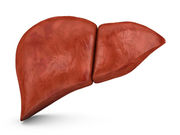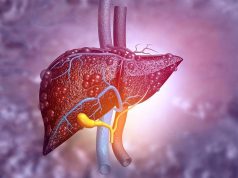Independent associations seen in cohort of obese children with non-alcoholic fatty liver disease
WEDNESDAY, Feb. 15, 2017 (HealthDay News) — Among children with non-alcoholic fatty liver disease (NAFLD), serum uric acid concentrations and fructose consumption are associated with non-alcoholic steatohepatitis (NASH), according to a study published online Feb. 14 in the Journal of Hepatology.
Antonella Mosca, M.D., from the Bambino Gesù Children’s Hospital in Rome, and colleagues studied 271 obese children with NAFLD to examine factors associated with NASH. They assessed fructose consumption using a food frequency questionnaire and measured serum UA.
The researchers found that 37.6 percent of patients had NASH. Hyperuricemia (UA ≥ 5.9 mg/dL) was seen in 47 and 29.7 percent of patients with and without NASH, respectively (P = 0.003). After adjustment for multiple (and all) measured confounders, UA concentration and fructose consumption were independently associated with NASH (odds ratio, 2.488 [95 percent confidence interval, 1.87 to 2.83; P = 0.004] and 1.612 [95 percent confidence interval, 1.25 to 1.86; P = 0.001], respectively). There was an independent correlation for fructose consumption with hyperuricemia (odds ratio, 2.021 [95 percent confidence interval, 1.66 to 2.78; P = 0.01]).
“In conclusion, in a cohort of children and adolescents with a histological diagnosis of NAFLD and histological confirmation of NASH, we show for the first time that UA concentrations and dietary fructose consumption are independently and positively associated with NASH,” the authors write.
Full Text (subscription or payment may be required)
Copyright © 2017 HealthDay. All rights reserved.








